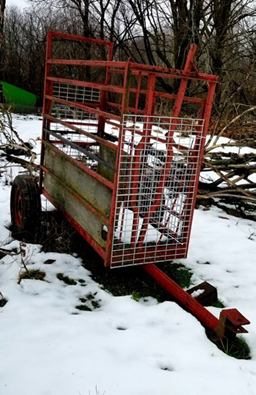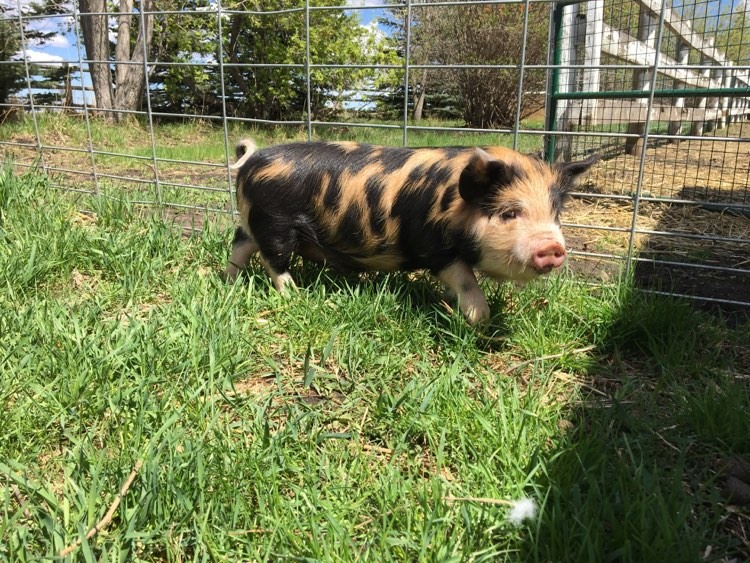Handling pigs is easiest when you use their natural herd behaviour to you advantage as the instinct of pigs is to stay together, follow one another, and move as a group. Using appropriate handling equipment (sorting boards, shaker panels, flags) for the different sizes of the pigs will increase the ease of movement, as pigs are very receptive therefore its important to move pigs calmly without loud noises or yelling. Just as important is identifying when pigs are becoming stressed during handling, and back off giving them time to calm down. Personal safety is also very important when specifically handling breeding stock (e.g. boars, sows with their litters), due to their large size they require caution at all times. It is best to always bring a sort board with you when handling them to ensure you safety.
Caution – Dogs and electric prods increase pigs’ stress during handling. Dogs should not be used to handle pigs, and electric prods should be used only as a last resort and in accordance with the Code of Practice for the Care and Handling of Pigs.
Tools
Description
Use
Pig Type
Pig (Sorting) Board
- Creates a physical and visual barrier.
- Sorting boards can be purchased, or constructed from a partial sheet of plywood, with holes for handles.
- When using a sorting board, make sure to use the ground as an anchor.
- DO NOT hold back a pig with the board wedged only against your legs/ knees.
- Can be used for all ages and sizes of pigs.

Rattle (Shaker) Paddle
Provides auditory and visual stimuli.
Homemade devices such as shaker cans or bottles can also be effective in moving pigs.
- Make noise for one or two seconds to start pigs moving.
- Gently tap pigs with the paddles to extend the handler’s reach.
- Avoid making constant noise or contact when moving pigs – this causes them to focus too much on you and inhibits movement.
- Can be used for all ages and sizes of pigs.
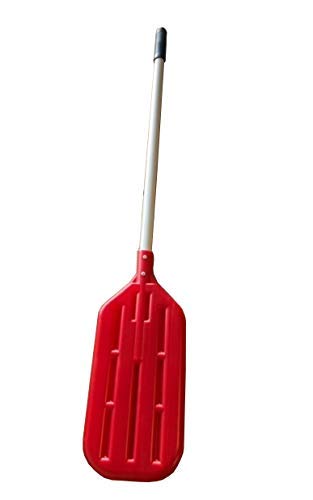
Nylon Flag
- Provides a visual stimulus.
- Can be constructed utilizing a square or rectangular piece of plastic or fabric on a rod or stick.
- Blocks a pig’s visual path and is used as a tool to provide the illusion of a dead end.
- Typically used for grower and finishing hogs.
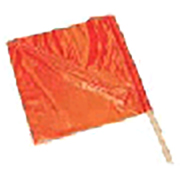
Pig Snare
A mechanical device made of a cable loop and sliding locks used to restrain larger pigs
- The size of the snare loop should be relevant to the size of the pig being restrained.
- Use only when absolutely necessary. Ensure the person snaring is trained and competent at this activity.
- Use according to the manufacturer’s guidelines.
- Used for larger pigs — grower, finishing, sows and boars — typically when treatment or euthanasia is required.
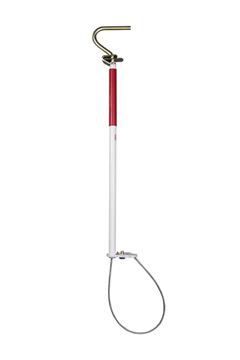
Pig Restraint
There are times when you will need to restrain a pig. These times include ear tagging, vaccinating, examining, treating a pig for injury or illness, or euthanasia.
Under 20 kgs
- Aproach calmly, herding into a corner if possible.
- Firmly grasp one or both hind legs of the piglet.
- Lift from the pen floor by putting your other hand under the pig’s belly or chest.
- Rapidly transfer to holding the pig with both hands, supporting the pig’s weight.
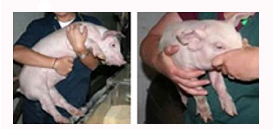
Under 20 kgs
- Too heavy to lift.
- Restrain by holding them in a corner or alley using a pig board.
- Pig snares can be used to restrain larger pigs for a very short time.
Using a Pig Snare Properly
Ear plugs or other ear protection is highly recommended.
Ensure good footing is available, as a snared pig is more likely to panic if it is on slippery/wet ground.
- Approach the pig calmly and let the pig chew the snare’s loop.
- Position the loop as far back in the mouth on the top jaw as possible, at least be behind the pig’s canine teeth.
- Quickly pull the snare tight and hold on firmly with both hands,
keeping the snare in a straight line with the pig’s head, neck, and backbone. - Perform procedures quickly so you can release the pig as soon as possible.
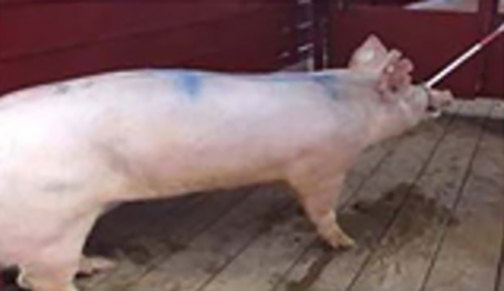
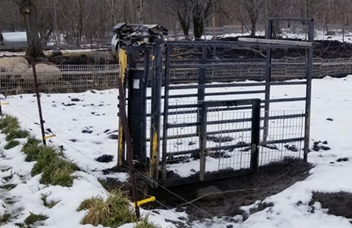
A handling chute is an important piece of equipment in your operation when it comes to handling pigs that require treatment or vaccinations.
